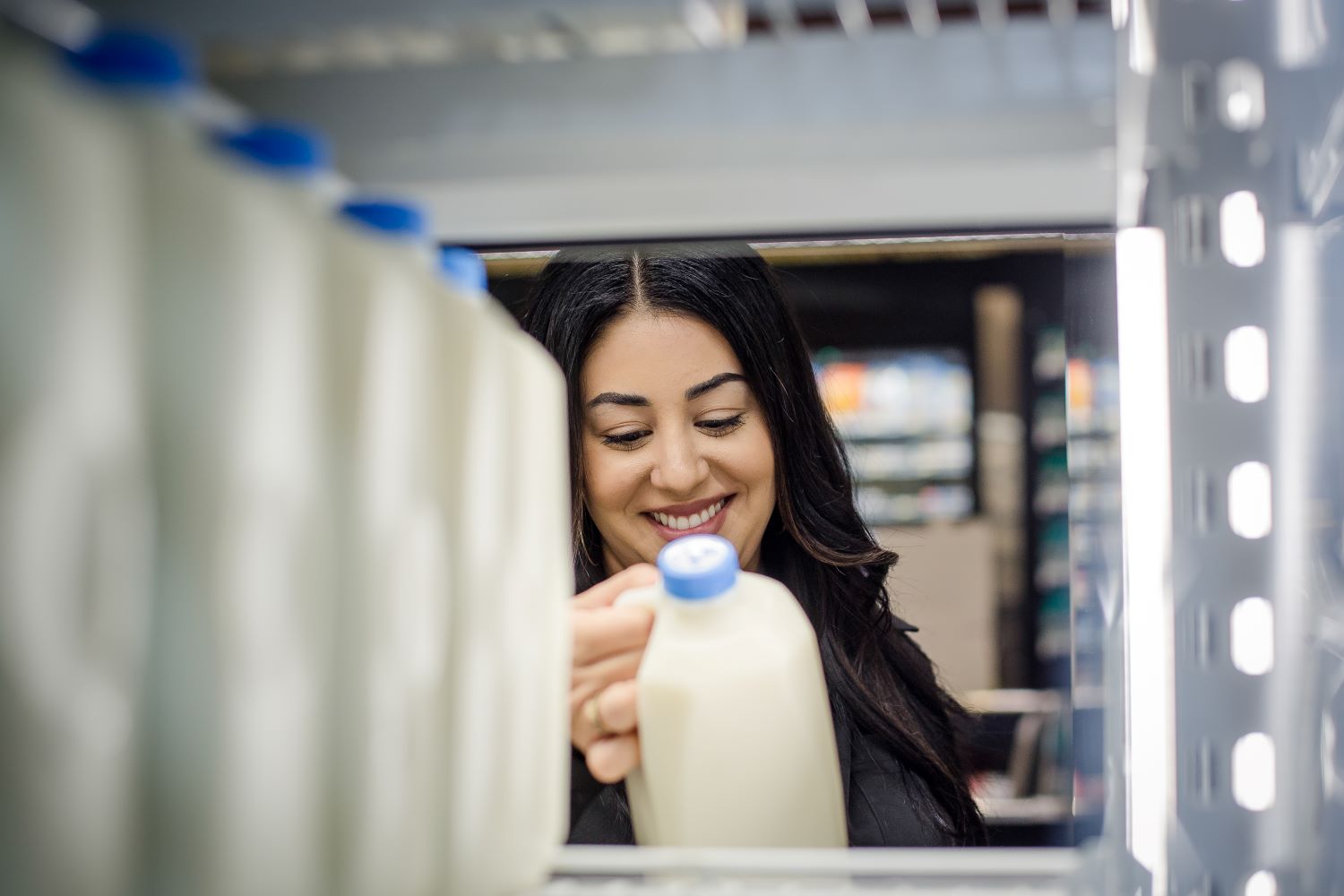What Is Homogenized Milk And What Does It Mean?
What Is Homogenized Milk, And What Does It Mean?
If you’ve ever looked closely at milk cartons and jugs in the dairy aisle, you’ve likely seen the term “homogenized” on the packaging—alongside “pasteurized.” But what does homogenized milk actually mean?
What Is Homogenization?
Homogenization is a process that gives milk its consistently white color and smooth texture.
“Homogenization has become the industry standard to stabilize the fat in milk and prevent separation,” says Chad Galer, vice president of product innovation and food safety at Dairy Management Inc. “This is accomplished by reducing the size of the milk fat globules into much smaller globules that resist clumping back together.”
That’s why your milk is always smooth, never lumpy. The homogenization process—typically involving pumping milk through small openings under high pressure—ensures an even texture, making milk a reliably consistent beverage.
Why Is Milk Homogenized?
Before homogenization, milk naturally separates, with a layer of cream rising to the top. To achieve a smooth texture, consumers would have to manually mix the cream back in, much like shaking a protein shake after a workout.
However, hand-mixing doesn’t always result in a uniform texture, often leaving clumps. Homogenization solves this issue by breaking down fat globules to create a smooth, well-integrated liquid.
Homogenization is used across the food industry for similar reasons. “It helps prevent fat separation in beverages, dressings, and condiments,” Galer explains. “It also reduces sedimentation in some vegetable juices and enhances flavor.”
The History of Homogenized Milk: From First Use to Now
Homogenization was invented in France in 1899 and gained popularity in the United States in the 1930s, largely due to its convenience. Beyond improving milk’s consistency, it also extended shelf life, making distribution easier and reducing waste.
“Homogenized milk, when handled properly, has a longer shelf life due to even fat distribution,” Galer notes. This was especially beneficial during the Great Depression when families needed food to last longer.
Importantly, homogenization does not change milk’s nutritional value or safety. “Because of this, the FDA only requires that milk be labeled as homogenized if it has undergone the process,” says Galer.
By the 1950s, most milk in the U.S. was commercially homogenized—a standard that continues today.
Homogenized Milk vs. Non-homogenized Milk
While nutritionally identical, homogenized and non-homogenized milk differ in texture and flavor. Homogenized milk has a smoother consistency and a fuller-bodied taste, creating a better mouthfeel—what Merriam-Webster defines as “the sensation created by food or drink in the mouth.”
There are also other benefits. “Homogenization reduces sensitivity to off-flavors caused by fat oxidation,” Galer explains. This is beneficial in maintaining milk’s fresh taste.
Homogenized Milk and Health
“Homogenization does not change the nutritional value or safety of milk,” Galer emphasizes. “So it doesn’t impact the health benefits of milk for better or worse.”
Milk contains 13 essential nutrients, each playing a vital role in health. Its high-quality protein supports muscle growth and repair, immunity, and energy levels. Meanwhile, its iodine content is crucial for brain development and bone health, particularly in young children and pregnant individuals.
Is Homogenized Milk Bad for You?
No, homogenized milk is not bad for you. The process simply improves milk’s texture and fat distribution without altering its nutritional composition. Homogenization ensures a smooth, consistent drinking experience—nothing more, nothing less.
.jpg)
















